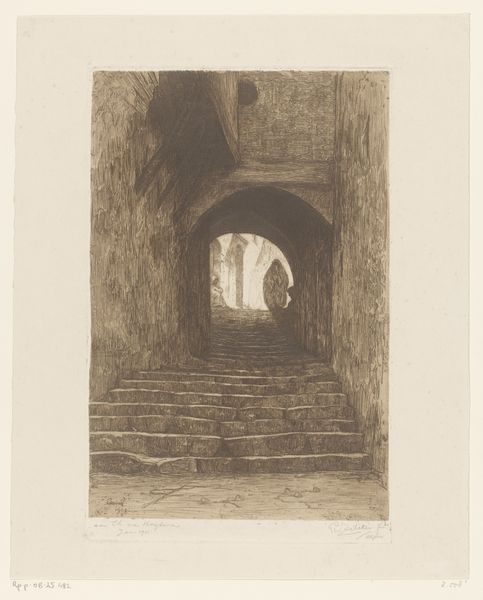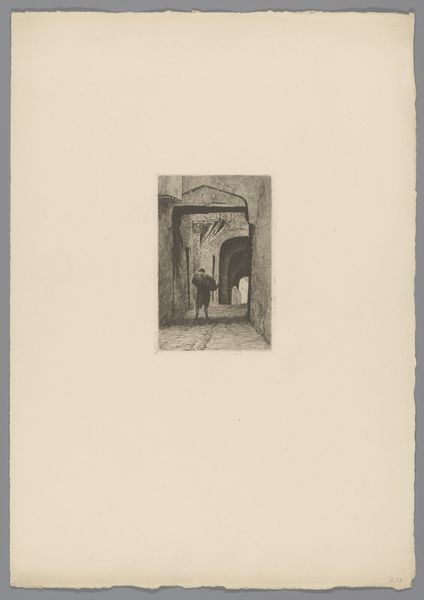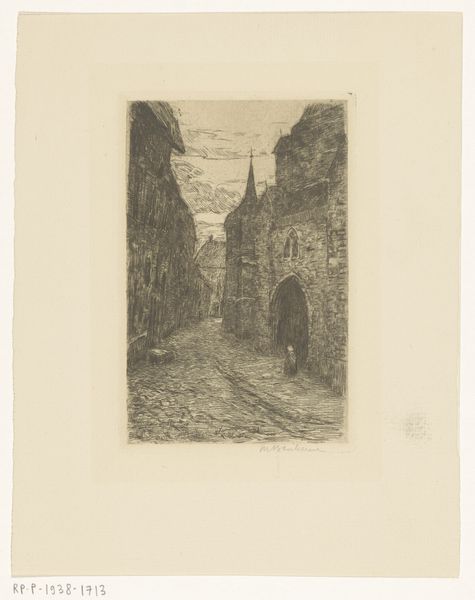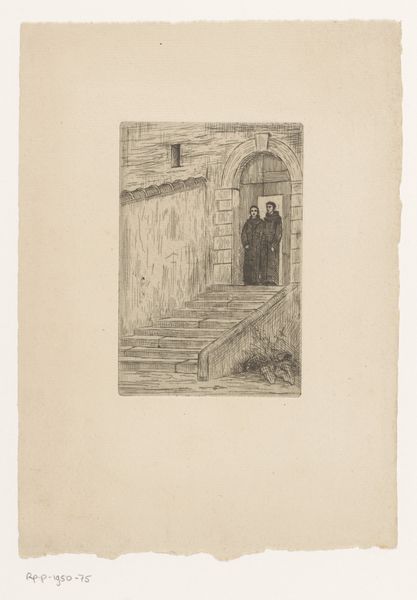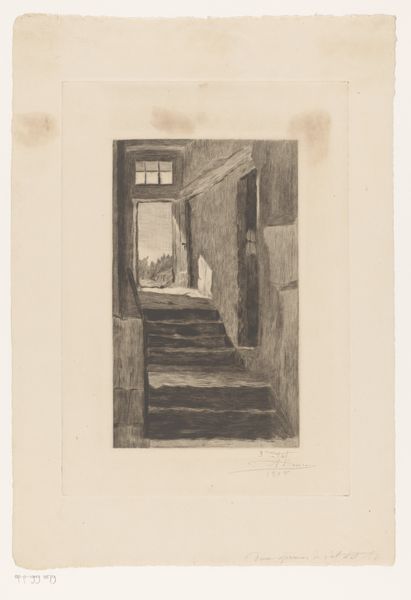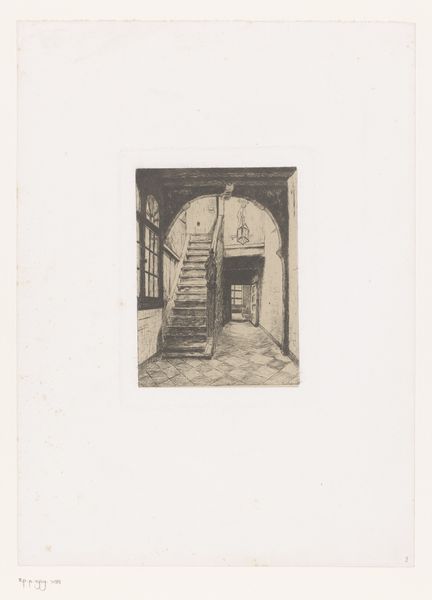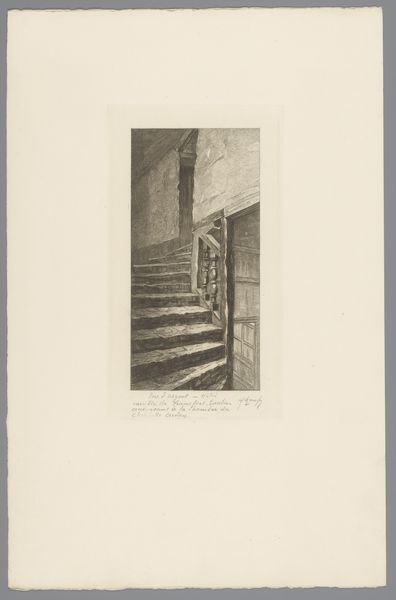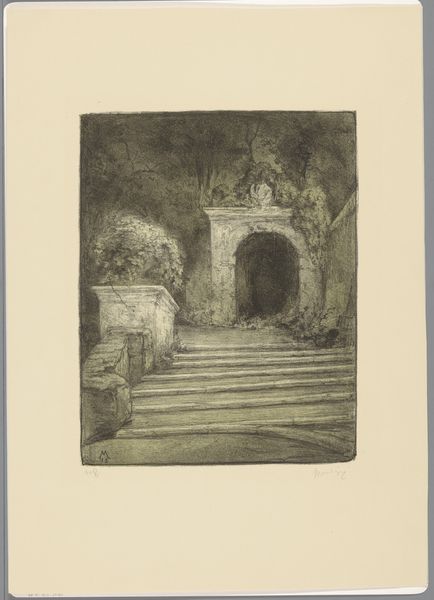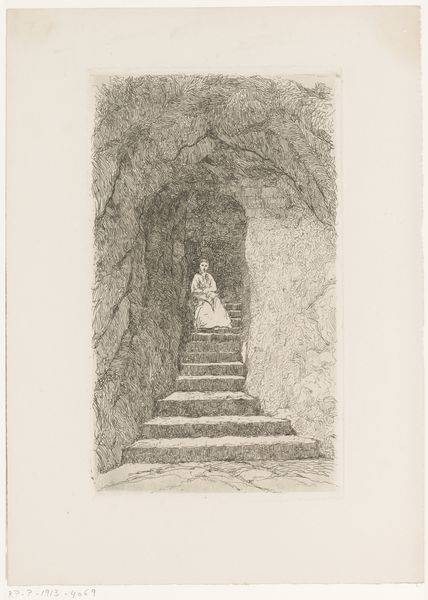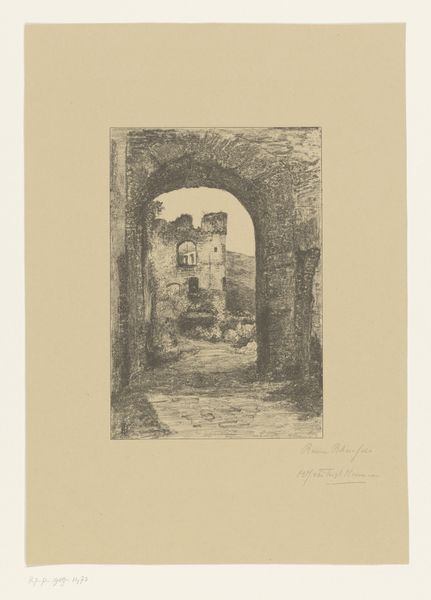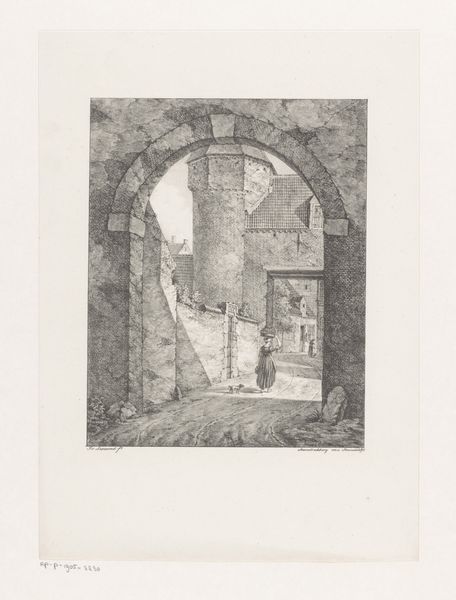
Dimensions: height 162 mm, width 114 mm
Copyright: Rijks Museum: Open Domain
Curator: This etching by Philip Zilcken, titled "Gezicht op een trap in een straat, te Algiers," roughly translates to "View of Stairs in a Street, Algiers." It dates from 1890 to 1930. Editor: The piece really emphasizes the steepness of the stairs and this feeling of enclosure created by the dark tunnel, almost claustrophobic, wouldn’t you say? What do you see in this piece? Curator: Absolutely, that sensation is palpable. The architecture seems to constrict and then, through the archway, a figure appears. This image resonates deeply with post-colonial theory, in my view. The sharp contrasts hint at themes of cultural encounter. Zilcken, a European artist, captures Algiers, yet there is a stark social tension in the architecture. The tunnel represents a portal to a different culture and lived experiences; the stairs signify a journey. It invites us to consider: Whose gaze is privileged here? Who has access and ease of movement, and who is subjected to climb this arduous passage? Editor: That's such an insightful way to think about it! I hadn't considered the post-colonial aspect so explicitly, but now that you mention it, I completely see the visual language conveying those power dynamics. It's almost as if the city is presented as a maze or an obstacle. Curator: Precisely. The ‘exotic’ location becomes a site loaded with social commentary on class, access, and potentially race. The lack of detail further isolates that lone figure on top. Can we ever truly bridge these divides, or are they intentionally etched into the landscape? Editor: I see what you mean. Thanks for illuminating a different, important lens. This piece definitely holds more significance than I originally perceived. Curator: Indeed, that's the fascinating journey art can take us on when we dig a little deeper and ask, “Whose story is really being told here?"
Comments
No comments
Be the first to comment and join the conversation on the ultimate creative platform.
